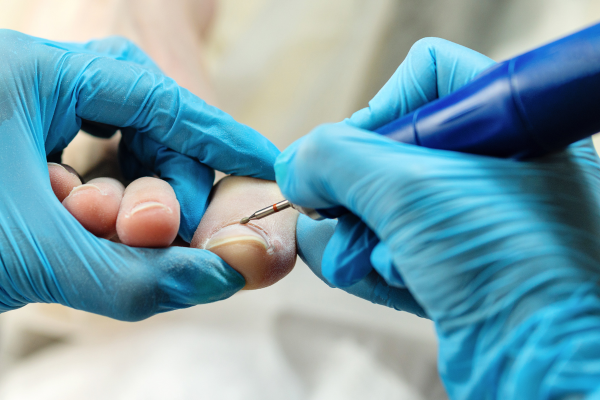
Recurring ingrown toenails is a very common and annoying problem that can cause pain and stress. Where some individuals will visit a Podiatrist on a regular basis (every 4-8) weeks to treat ingrown toenails conservatively, there is a surgical treatment for those who want to permanently stop ingrown nails from growing back. A common concern we hear is that Nail surgery is scary and extremely painful and as a result many people choose not to go down this route of treatment. I’m here to tell you that this is not the case! Keep reading to find out what is involved in nail surgery.
What is the surgery called and how does it work?
At Sole-Lution Podiatry we actually refer to this as a simple procedure, and it is called a Partial Nail Avulsion (PNA) with chemical matrixectomy. Sounds complex but I can assure you it is quite simple! This procedure does not involve any cutting of skin or stitches. Here is what to expect during the procedure:
- An anaesthetic injection is injected to numb the affected toe only, ensuring the rest of the procedure is painless.
- The portion of the nail that is cutting into the sides of the skin is resected down to the nail root and is performed without cutting the skin
- The resected portion of the nail is removed, and a chemical is applied to destroy the nail root
- The chemical will be neutralized, and a sterile dressing will be applied to the toe
Frequently Asked Questions
Q: Will there be a gap between the remaining nail and skin?
A: Yes there will. However this is only temporary, as the gap will close once the wound has healed.
Q: Can I drive home after the appointment?
A: We strongly advise that you do not drive yourself home from the appointment, as the anaesthetic takes a few hours to wear off, and it is important to keep the toe from getting bumped after the procedure.
Q: What is the recovery process like?
A: Your Podiatrist will schedule two follow up appointments that will involve assessing the wound to ensure there is no infection, and changing the dressing. The first follow up appointment is 2-3 days after the procedure, then the second appointment is 2-3 after the first follow up. Following this, complete healing takes anywhere between 3-6 weeks and is highly dependent on the health and age of the individual.
Q: Can I wear shoes after the procedure?
A: Yes you can, however we advise that you wear open toed footwear or shoes that are wide fitting to minimise compression to the wound.
When should nail surgery be avoided?
This procedure is generally safe for young and healthy individuals. However, there are conditions where we do not recommend this procedure.
You should avoid Partial nail avulsion with chemical matrixectomy if you have:
- Diabetes with diabetic foot complications (Neuropathy, peripheral vascular disease, diabetic foot ulcers)
- History of poor wound healing
- Bleeding disorders (E.g. Haemophilia, warfarin, blood thinners)
- Poor circulation to the foot
Your podiatrist will assess the above to ensure that you are a suitable candidate prior to performing the procedure.
If you have any further questions regarding nail surgery, please feel free to contact the clinic and we will be happy to help you out 🙂
Have a great day!


